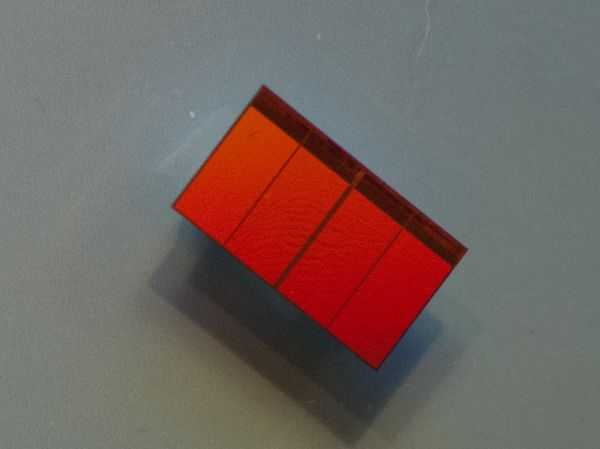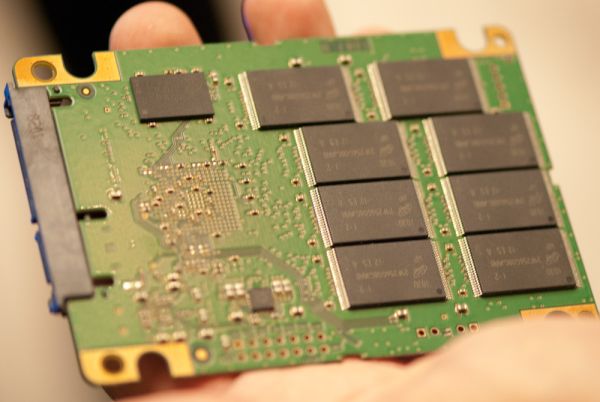Micron's RealSSD C400 uses 25nm NAND at $1.61/GB, Offers 415MB/s Reads
by Anand Lal Shimpi on January 4, 2011 8:20 PM EST- Posted in
- Storage
- SSDs
- Micron
- CES 2011
- RealSSD C400
Here’s a little deja vu for you. At last year’s Storage Visions (a small storage show that precedes CES) Micron announced its first 6Gbps SSD, the RealSSD C300. Although met with its fair share of growing pains in the form of firmware issues, the C300 ended up being a competent performer throughout most of 2010.
This year, once again at Storage Visions, Micron announced its next generation SSD: the RealSSD C400. Based on the same architecture as the C300, the C400 is a combination of IMFT 25nm NAND, a slightly tweaked controller and a significant improvement in firmware.
The controller is still a Marvell 6Gbps solution, while the firmware is all Micron’s own development. As Micron (and SandForce) have proved in the past, it’s not so much the raw processing power of the controller but the architecture of the firmware that really matters.
The controller is still paired with a 256MB DRAM to cache LBA to NAND page mapping and act as a scratch area for the Marvell controller. Unlike the C300 however, the 64GB version of the C400 will only have a 128MB cache (the 64GB C300 had a 256MB cache).
Despite using IMFT’s 25nm NAND (at roughly 3,000 program/erase cycles per NAND cell), Micron claims the C400 will last for at least 72TB of writes over its lifetime which is identical to how long Micron claims the C300 will last. I asked Micron why the C400 didn’t incur any endurance penalty with the switch to 25nm, its answer was simple: the C300 was conservatively rated. Even though the C300 NAND cells will last longer, both it and the C400 will at least make it to Micron’s 72TB rating. Micron also mentioned to me that it writes more than 72TB of data to its drives during development, so this is a verified rating.
The move to 25nm NAND gives us one major improvement: cost. The 512GB C400 will be priced at $825 in 1,000 unit quantities - that works out to be $1.611 per GB. The 256GB drive will go for $425, the 128GB at $210 and the 64GB somewhere above $100. As 25nm production ramps up I wouldn’t be too surprised to see SSD prices drop down to the magical $1/GB price point.
Price isn’t the only benefit of the C400, performance should be much improved as well. Micron is claiming sequential read speeds of 415MB/s and sequential write speeds of up to 260MB/s (256/512GB drives). The 128GB drive is good for up to 175MB/s sequential writes. Random write performance is unknown at this point but I heard Micron mention something around 50,000 4KB random write IOPS.
The raw specs are much better than what we have today however not quite as high as what SandForce is promising with its SF-2000. The difference is availability, while we saw the C400 in action and it’ll be shipping in February, SF-2000 drives are more than a quarter away.
Crucial, Micron’s retail arm, will be selling the C400 under its brand as the Crucial M4.













39 Comments
View All Comments
softdrinkviking - Tuesday, January 4, 2011 - link
speaking of storage visions, have you seen anything about cleversafe technology in implementation?AnotherGuy - Tuesday, January 4, 2011 - link
Not bad but still the 128gb or the 64gb which are most feasible for the majority, r kinda slower than their 256 and 512 parts... Lets hope Sandforce raises the bar even further... so hopefully prices go down at least...JarredWalton - Tuesday, January 4, 2011 - link
I think the magical point for me is when I can get a 256GB drive for under $200, so we're about one more generation away from the point where I can easily recommend SSDs to anyone and everyone. Right now, I'm good with 120GB for the OS drive, but then I still need a data drive, and there are many laptops where you simply don't get a second drive slot. I can live on 120GB and 160GB drives, sure, but when my email folder and documents folder suck down 40GB, I'd prefer twice that much capacity. :-)tipoo - Tuesday, January 4, 2011 - link
Agreed, 256GB for 200 dollars is where I would gladly jump in.anactoraaron - Tuesday, January 4, 2011 - link
Yeah, but when we get there I would worry about the longevity of the drive. At NAND smaller than ~18nm we would likely be looking at ~1000 program/erase cycles and there's no way I would buy a SSD with (likely would be) a 1 year warranty. It would be hard as a consumer/enthusiast to get behind. That's unless OS's (windows) account for SSD's more than 7 does now by making an effort to greatly reduce the program/erase cycles.But I'm lovin my F40 as a boot drive.
ImSpartacus - Tuesday, January 4, 2011 - link
Once NAND starts to die, the drive just steadily loses storage, right?That's another reason to get a 256GB drive when you only need 160-200GB of space. Once the drive starts to kick the bucket, you don't feel the crunch for a while.
ajp_anton - Tuesday, January 4, 2011 - link
Problem is that if the controlled has done its job well, pretty much all of the drive will die at once.extide - Wednesday, January 5, 2011 - link
No, the disk will never appear to lose space. It will just work fine until it suddenly fails. That would cause all sorts of problems with partitions and file systems if the disk suddenly started shrinking...Fritzr - Wednesday, January 5, 2011 - link
Early hard drives had this problem. It was solved by allocationg the bad sectors as 'unavailable' in the File System's record keeping system.Later IDE drives hid this problem by dynamically allocating 'spare' sectors that are normally hidden from the File System whenever a bad block is detected.
SSDs that have a gradual fail mode will simply implement the bad sector marking that was used with RLL drives. This causes a File System friendly degradation of capacity until the boot block goes bad.
ImSpartacus - Tuesday, January 4, 2011 - link
I was just about to say the same thing. I want to install all my Steam games and not worry about space problems. Actual data is obviously not a problem with <$70/TB platter storage.The thing that also eats me up is the performance improvement on higher capacity drives. It's more of a principle thing. If I pony up the money for an SSD, I want 100% of the controller's performance. It doesn't seem fair that more capacious drives are quicker.